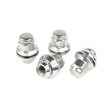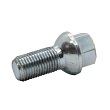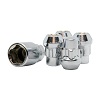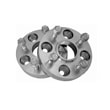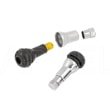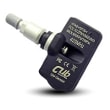What do the symbols on car tires mean? We decipher the codes
Mysterious symbols, numbers, letters and other signs placed on the side of car tires are not accidental. These markings are essential for understanding the tire specifications, as well as for the safety and optimal performance of your vehicle. In this article, we dispel all doubts and explain what these codes mean.
Tire size - what do the numbers and letters mean?
How big wheels does your car have? Tire size is probably the most familiar designation found on any car tire. It is a series of numbers and letters that tell us about the key dimensions of the tyre.
For example, a string of numbers, characters and letters 205/55 R16 means:
- "205" is the width of the tire in millimeters.
- "55" is the percentage ratio of the tire profile height to its width (in this case, 55% of 205 mm).
- The "R" means the tire is radial, meaning its plies run radially from the center of the tire.
- "16" is the diameter of the rim expressed in inches on which the tire should be mounted.
Understanding these markings is crucial as choosing the right tire size for your car has a direct impact on driving safety and efficiency. Car tires in the wrong size can not only affect driving comfort, but also fuel consumption, traction and even the accuracy of dashboard indicators such as the speedometer. Therefore, always follow the car manufacturer's recommendations and choose the right tire size. Basic markings and information about them can usually be found in the car's owner's manual or on a sticker in the driver's door.
Remember that changing the tire size to a different one than recommended by the manufacturer may require modifications to the car and should always be performed by a qualified mechanic. Also remember that the right tire size is not only a matter of driving comfort, but above all your safety. So always make sure your tires are the right size and in good condition.
Manufacturer code - how to read it?
A special manufacturer code, often also called a batch number, is a unique identifier that allows the tire manufacturer to track and identify its products. This code consists of a series of letters and numbers that indicate the place, date and production line where the tire was manufactured. Although the manufacturer's code may seem complicated and useless at first glance, it is very useful in the event of a product recall or identifying problems with a specific batch of tyres.
Tire production date - where to look for it and how to interpret it?
The exact date of manufacture of the tire is usually marked with a four-digit code on the sidewall. The first two digits indicate the week of manufacture, and the last two digits indicate the year of manufacture. For example, the code "3220" means that the tire was produced in the 32nd week of 2020. This is an important marking because tires, like many other products, have a shelf life.

Modern car tires, despite the fact that they are made of durable materials, are subject to a natural aging process over time. This is influenced by various factors, such as exposure to the sun, changes in temperature, as well as contact with oils and chemicals. All of this can lead to a loss of elasticity in the rubber, which in turn can affect the tire's performance and safety. For this reason, most tire manufacturers and automotive organizations recommend replacing tires approximately 5-10 years after the date of manufacture. This is not affected by tire size or tread condition. Of course, if the tire shows any signs of damage, such as cracks, abrasions or deformations, it should be replaced immediately.
Load index and speed index - what do they say about the tyre?
Manufacturers also put other symbols on tires that indicate important parameters that suggest how to use the tyres. In this context, the load index and the speed index are particularly important.
The load index is a number that indicates the maximum load a tire can safely carry at maximum pressure. Each number corresponds to a specific weight that the tire can carry. For example, a load index of 91 means that the tire can safely carry a load of up to 615 kg.
The speed rating is a letter that indicates the maximum speed a tire can safely sustain. Each letter corresponds to a specific speed. For example, the speed rating "H" means that the tire can safely maintain speeds of up to 210 km/h. If you are interested in the difference between summer and winter tyres , and not only in terms of this index, we encourage you to read other articles published on our blog.
Understanding these indexes is extremely important for the safety and optimal performance of your vehicle. Tires with an incorrect load index may not be able to safely support the car's weight, which can lead to tire damage and loss of vehicle control. Similarly, driving faster than the speed rating of the tire can lead to tire damage and dangerous driving situations.
Therefore, when choosing tyres, you should always pay attention to such markings. Information on the recommended parameters can usually be found in the car's manual. You can also always consult a professional mechanic or tire dealer.
Understanding the mysterious symbols on car tires makes it easier to choose the right tires for your car. This is essential for safe and efficient driving. Remember that the right car tires are not only a matter of comfort, but above all your safety and the safety of other road users.




 Nowoczesny design
Nowoczesny design Idealne dopasowanie
Idealne dopasowanie Duża wytrzymałość
Duża wytrzymałość Wysyłka gratis w 24h
Wysyłka gratis w 24h
 Indywidualny projekt
Indywidualny projekt Dedykowany opiekun
Dedykowany opiekun
